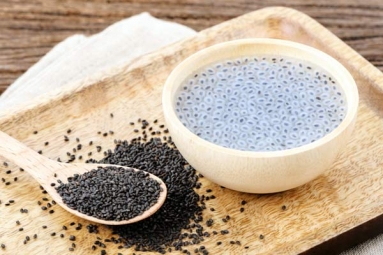Holi 2019: Celebrate This Holi With These Six DIY Natural Holi Colors That Are Benign and Healthy for Skin
March 19, 2019 12:51
(Image source from: Báo Mới)
Holi without colors is to no purpose. Since many colors that are detrimental entering the market, the call for natural colors has surpassed.
At one time, Holi was played with natural colors, sourced from plants, flowers, and kitchen ingredients. But the artificial colors that we by and large use these days can lead to many side effects, especially if they stay on the skin for too long or enter the eyes and nose.
Here we are to your rescue with 5 Do It Yourself (DIY) colors you can make at home from scratch.
Turmeric for Yellow
 (Image source from: India.com)
(Image source from: India.com)
Turmeric is the best household ingredient for yellow color and it’s much better if it is organic. But turmeric is notoriously difficult to remove. Thus it is advisable to mix it with chickpea flour, Multani mitti or rice flour. In addition, turmeric does the skin a lot of good as it has antiseptic properties, which help treat many skin infections.
Beetroot for Pink
 (Image source from: India.com)
(Image source from: India.com)
For magenta or pink colored powder, you can either use dehydrated beetroot powder or beetroot juice. To dehydrate beetroot, you can leave thinly sliced beets in the sun for a few days or place them in the dehydrator. Or if you don’t want all the fuss, simply juice a few beets and mix the liquid with rice flour.
Red Sandalwood for Red
 (Image source from: NDTV Food)
(Image source from: NDTV Food)
For red colored powder, use Raktachandana or red sandalwood. It is an important ingredient in Ayurvedic lepas meant for skin diseases. Red sandalwood powder is used for treating many skin diseases due to its antiseptic and anti-inflammatory properties. The powder is available at stores that supply Ayurvedic drugs.
Red Sandalwood and Turmeric for Orange
For orange color, mix red sandalwood powder with turmeric. This can be used in both wet and dry form. If you want a brighter orange, use more turmeric and if you want a deeper shade, increase the ratio of red sandalwood.
Leafy Greens for Green
 (Image source from: India.com)
(Image source from: India.com)
For green color, leafy greens like palak can be juiced or ground into a fine paste for a bright green hue. You can also mix it with a little bit of besan or chickpea flour to make it easier to apply.
For the dry powder, you can buy packets of neem powder and mix it with rice flour for easy application.
Multani Mitti and Coffee Powder for Brown
Multani mitti or fullers earth is used as a base for many skin preparations. It has a clay-like consistency, which can be mixed with other ingredients. For a rich brown color, mix the instant coffee powder with some Multani mitti.
None of these natural colors is detrimental to the skin and the best part is that the shades don't stay on the skin for an uncomfortably long time. If making these colors are too tedious, you can always opt for food colors. Accessible in all the shades, food colors can be easily mixed with cornstarch, Multani mitti or rice flour.
By Sowmya Sangam











